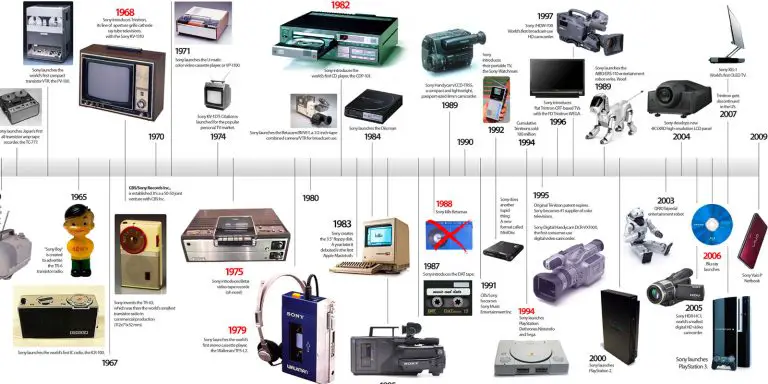The company has pushed a lot of famous Sony products that failed (starting with Betamax) but also a lot that have won the market, even earning the title as their best products.
Sony is a fascinating company. Whenever it’s time for technology to take another step they’re there, championing their own proprietary format or product. Their history says that sometimes their creation is embraced, sometimes it fails miserably — but either way, they’re not just going to sit around and work on someone else’s blueprint without taking a stab at making their own first.
Over time, I’ve owned a decent number Sony products. I once had a VAIO desktop, and my first laptop was one as well. I’ve owned a Walkman and a Discman, there’s a random MemoryStick that used to float around in my computer bag, I’ve got a PlayStation 2, and (as I’ll discuss later) I even had a practical application for a portable MiniDisc recorder.
Just in that list, some are successes, some are failures. It’s uncanny.
Famous Sony products best fails and wins
I decided to rank 11 of the most famous proprietary Sony creations — formats, products, etc. — on their successes. It’s a really interesting look at a company that never took “no one wants something purple and overpriced” for an answer.
These are ranked from least to most successful anecdotally, and based on their impact in the U.S. I’m sure in Japan everyone’s still listening to DAT tapes and playing their PSP Gos, but I can’t confidently make swooping generalizations about all that.
11 | Betamax
“Sony Betamax.” The phrase that became synonymous with losing a one-on-one battle. Even more so than “Buffalo Bills.” (That’s right. Cleveland fans totally score off Buffalo fans.)
We all know the story. There was VHS. There was Betamax. Betamax came first and produced sharper recordings. VHS was cheaper and could store more footage on one tape. VHS won. Cheap and long always beats expensive and high-quality.
It’s why good sitcoms go off the air — you can just slap Biggest Loser up there for two hours for a fraction of the price and get the same, if not better, results. And to a lesser extent, it’s why people will go watch strippers while sitting at a strip club all night rather than hire a hooker.
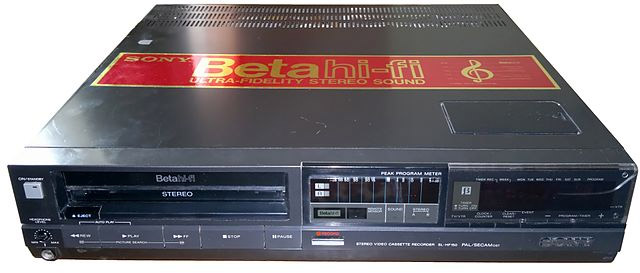
10 | The Sony/ BMG rootkit
As per their usual M.O., Sony came up with their own unique plan to deal with the mp3 explosion of the late ’90s/early ’00s. Rather than upload garbage-filled mp3s to Napster, push the RIAA to take college students to court or try begging people to stop, they decided to go a different route.
As soon as you play one of their CDs on your computer, it secretly installs an almost undetectable bit of software (called a rootkit) that runs in the background to regulate your ability to copy that CD. Of course, everyone else in the world calls “secretly installed software” a virus.
And Sony’s was, no doubt, a virus. Not only did it regulate how you used the CD you’d purchased, it also constantly ran in the background of Windows, absorbing your system’s resources… and was so poorly written that it left your computer with huge, exploitable security holes.
Class action lawsuits followed, Sony lost and the entire thing was one of the more embarrassing moments in the music industry’s too little-too late scramble to fight piracy.
By the way, here are the lists of compact discs sold with Extended Copy Protection and MediaMax CD-3, of the CDs that came with this rootkit installer, including such uber-piratable CDs as the soundtrack to Elizabethtown, Celine Dion’s greatest hits in French, and the Imogen Heap album that contains the “Mmm whatcha saaay” song.
9 | UMD
These were pint-sized DVDs that Sony created to store movies and games for the PlayStation Portable system. The games aspect was whatever, but the movies were the problem. They didn’t sell well initially — they were slightly more expensive than DVDs and way less versatile (since they could only be played in the PSP and, literally, nowhere else).
All of the movie studios that don’t have the same Corporate Syngergy Is Good! poster on the wall as the PSP team (in other words, all of the studios except Sony) were reluctant to waste resources putting out movies on UMD. The format died.
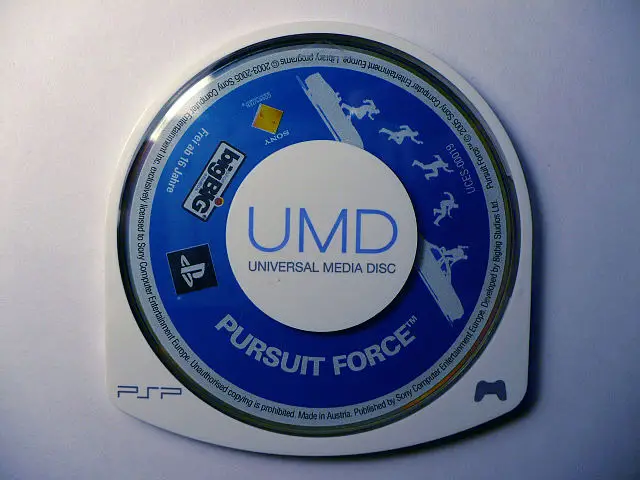
8 | Minidisc
Minidisc had some potential, but it suffered from being too expensive when it came out and then, eventually, adjusting to the mp3 era too late. It could’ve been the bridge between CDs and mp3 players, except that no bridge was ever really needed. Minidiscs were really like the escalator to nowhere.
I actually used a Minidisc player far longer than, well, anyone. When I got to LA in 2001 and was doing stand-up comedy, the “in” thing to do was record your shows on a Minidisc player.
It was more efficient, better quality and more manageable than recording them on mini cassettes. So all of us comedians would walk up on stage and set our little Minidisc recorders down. I never really listened to my old shows — I’m notoriously brutal on myself and couldn’t listen unless every line was uproarious laughter — but I still have a massive Minidisc collection here featuring two so-so years of stand-up comedy.
But no, I still don’t think they were a necessary invention.
7 | Memory Stick
When it came time to address storage for digital cameras, most companies started out with Compact Flash cards, then moved to the smaller, cheaper and more popular SD cards. Sony, obviously. took its own road less traveled and made their own long, thin purple cards called Memory Sticks.
Like most Sony products, they were a bit more expensive than the other competitors on the market. Unlike other Sony products (TVs and such), there was no technical/branding/prestige justification for why they were more expensive.
Even though they basically know they’ve lost this fight — Sony Ericsson phones have now switched, like all phones, to Micro SD cards — Sony continues to pump out new, improved Memory Sticks for its cameras and camcorders and such. That must be a really depressing division of the company to work for. It’s like the people who work in Nokia’s car division. (Which actually still exists.)
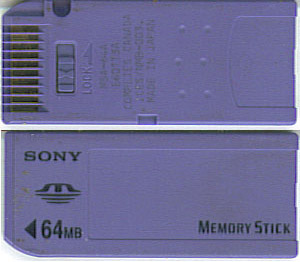
6 | The 3.5-inch floppy disc
This is the point where the list flips to products that Sony made to try to take over the market… and succeeded. Researching this list, I was shocked to see that Sony was the company behind the final generation (size-wise) of floppy disks.
They came to be in the usual Sony way — everyone was using those flat, black, 5.25-inch floppy disks and Sony started pushing smaller, sturdier, (usually) higher-capacity 3.5-inch disks. And they actually caught on.
I have them this low on the list because floppy discs are now a distant memory. The tiny, tiny card in my phone holds 1,300+ times more than a floppy disc did. But at the time, in the ’80s, Sony got a win.
(Interesting fact: Sony is still making floppy discs. They’ve said they’ll finally stop in March 2011 due to dwindling demand. That’d be like if Adidas keeps running off Cavs 23 jerseys but stops sometime in 2021 due to dwindling demand. The demand has officially dwindled. There’s no dwindling wiggle room left.)
5 | JumboTron
Sony created the JumboTron, a product that took over a niche market so aggressively that all giant arena and stadium screens are now referred to as JumboTrons. (Even though Sony stopped manufacturing them a few years back and other companies have stepped in. That’s why the JumboTron is ranked 5th on this list.)
It’s in that whole Xerox-Kleenex-Band-Aid zone where the brand name has become the generic term for the entire industry. Which you’d think companies would like, except they hate because they think it weakens their brand. It very well might.
Still, isn’t that a better market position to have than the other side of it — like when you order a Coke at a restaurant and they apologetically ask you “Is Pepsi OK?”
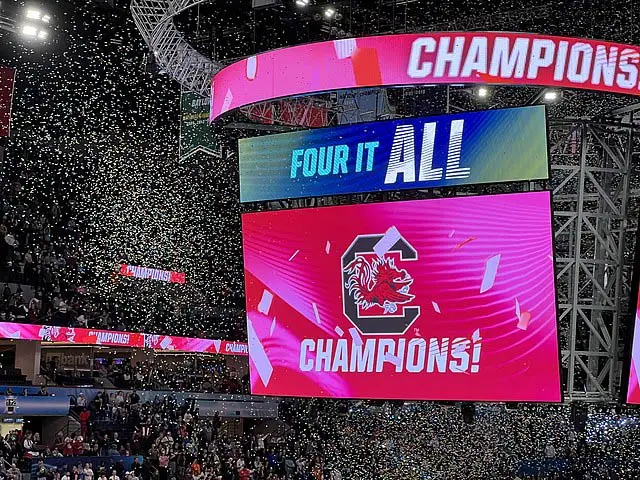
4 | Blu-Ray
I hate to put Blu-Ray this high. I think this format is going to be obsolete sooner rather than later, as we’re already getting to the point where we’re able to stream highly defined movies into our homes.
(And don’t make the “but DVDs have extras” argument. If you’re really willing to spend $24 on 27 Dresses so you can get an exclusive video of Giuliana DePandi giving you a tour of Katherine Heigl’s closet, life is passing you by.)
But Blu-Ray gets this spot because they WON. When everyone heard that Sony was fighting a battle to introduce a format of HD DVDs… battling a format actually called HD DVD… the logical thought was: It’s Beta, version beta. They’re gonna get killed.
Inexplicably, they won the battle. So between now and whenever the entire DVD industry fades into the background, Sony has full-on pissing contest bragging rights.
3 | Walkman
This was another product that just dominated the market. When I was in 6th grade, I didn’t have an RCA portable cassette player with radio tuner, I had a Walkman. (Well, technically I did have an RCA portable cassette player with radio tuner, but we all called it a Walkman.)
I even remember being in an electronics store called Best — not Best Buy, mind you, just plain old Best — and using my birthday money to buy a really souped up actual Walkman. It had a digital radio tuner and auto reverse and a small, three-switch equalizer.
My dad said to me, “Are you sure you want to buy that, cassettes might not even be around in a few years?” I shrugged him off. Cassettes will never die! I’ll be listening to my worn-out copies of the Cocktail soundtrack and EMF’s debut album forever.
2 | PlayStation
They stepped onto Nintendo’s turf, right over Sega’s dying body, looked them in eye, threw up their swords and charged. And for about a decade there, they actually won that battle.
At least until Nintendo decided that people would really respond to something cheap with long, family- and group-friendly replay value instead of something expensive and higher quality.
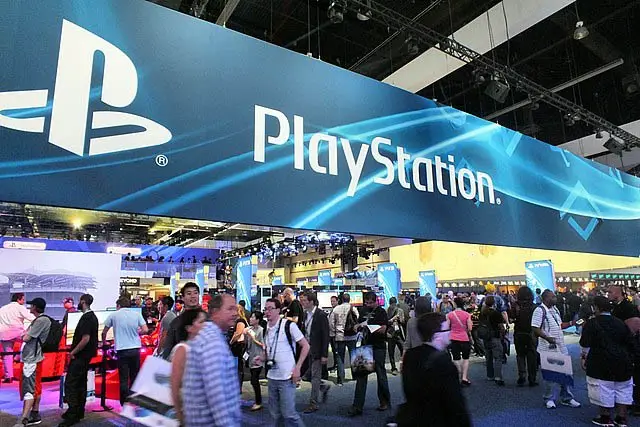
1 | Compact disc
This beat out the PlayStation because of a remarkable feat. Even if you rarely see people with portable CD players anymore — I saw a guy with one at the gym and it took me a minute to figure out that he wasn’t carrying a space-age man purse — more than 20 years since they became popular, this medium is still in almost every house, car and computer in the country.
And Sony made them. They created them, pushed them and popularized them. For all their failed audio media efforts (a lot of which I didn’t even get to on this list), they managed to create the biggest one of all. And sure, they’ve installed viruses on them to infect their customers, but without Sony, there wouldn’t have been CDs available for those viruses. Think about that.
